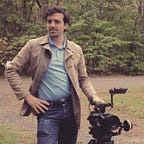Finding Peace in Darkest Dungeon
This story was originally published in video form on Nov. 4, 2019, by Subpixel.
Darkest Dungeon captured my imagination like few other games ever have. The atmosphere was so unlike anything I’d ever played before, brought to life by the phenomenal artists at Red Hook and the immaculate vocal performance of Wayne June. But what really stuck out to me about Darkest Dungeon more than other turn based games I’ve played was the implementation of stress as a character attribute, and subsequently how the game then forces you to find moments where your party — and by proxy, yourself — can pause and breathe.
For those unfamiliar, Darkest Dungeon is — by Red Hook’s own description — a “gothic horror turn-based strategy RPG about the psychological stress of adventuring”. You play as various adventurers tasked with reclaiming “The Hamlet” from the unspeakable horrors that have been unwittingly — but occasionally deliberately — unleashed by the previous caretaker of the property. From the hub of the Hamlet you can send parties out into the neighboring wilds to begin the arduous task of taking back control of the region. And it’s in these wilds beyond the Hamlet that you’ll spend the bulk of the game.
So, the twist of Darkest Dungeon, as I already mentioned, is managing characters’ stress. Unlike similar turn-based RPGs, where the two big stats you need to worry about are health and mana, Darkest Dungeon has you worrying about health and stress. Extra supplies are few and far between in the stygian depths, so not only is there a strategic element to the combat of Darkest Dungeon, but to the exploration as well. Navigating the desolate and delipidated halls beneath the Hamlet is a gamble, as certain dead-end paths lead not to the final boss as you’d hoped, but to emptiness, and quiet. You are then faced with two options: return the way you came, and risk depleting your last stocks of food and your final minutes of torchlight; or return to the Hamlet, and suffer the psychological damage of a task left unfinished. The latter could leave your adventurers unavailable for your next expedition, as they’ll need time to unwind after their subterranean misfortunes; but while retreat may mean momentary failure, it does not mean death — and death, in Darkest Dungeon is permanent.
Standing apart from the other mournful features of the Hamlet, the humble graveyard stands as a monument to failed expeditions. Every one of your adventurers lost to the deep will find their final moments recorded there. So when you find yourself down at the empty and quiet dead end, food stocks low and torchlight dim, your choice is not so much between failure and success, but failure and death. Allow me to explain why.
Those who’ve played basically any videogame will be familiar with health as a game mechanic. When your health reaches zero you die, or in some game “faint”; but In Darkest Dungeon when your health reaches zero you don’t immediately pass out or expire. Instead you are designated “At Death’s Door”, giving you precious moments to bring your character back from the bring or frantically deal the killing blow to whatever creature has brought you to this perilous state. The longer you remain at Death’s Door, the more likely you’ll pass right through it — to become nothing more than a memory in the minds of your fellow adventurers.
But as we’ve already seen, health is just one concern for your adventurers — the other is stress. If your stress levels pass a certain point, your adventurers will find themselves at a crossroads, and either overcome their anxieties in a heroic flourish or acquiesce to the overwhelming burden of the moment and descend into unhinged madness.
If misfortune befalls you in such a way that an adventurer is at Death’s Door and past the threshold of their anxiety, that final blackness may not arrive by a killing blow from your enemy. Perhaps it will be welcomed by a heart attack.
If your party is assembled correctly, it is easy to heal your adventurers back from Death’s Door; but it is much more difficult to calm them down from the brink of despair. Darkest Dungeon takes the stance that your characters’ mental health is far more important than their physical health. Critical hits from enemies, journeying too long without eating, stumbling into hidden traps, and an absence of torchlight can all have an adverse affect on your party’s mental wellbeing.
So it becomes of vital importance to find moments along your journey where your adventurers can rest and breathe. And while there are small things can do along your journey to stave off an adventurer’s impending mental degradation, the surest way to cleanse lingering anxiety is around the campfire with your companions. Shorter quests don’t require it, but your longer journeys will allow you to bring along firewood to supplement your regular supply of torches. Lighting this firewood brings your party into a state of repose, giving them a moment to take solace in the glow of the fire and briefly forget the horrors they’ve seen. Each adventurer has a certain set of actions they can perform at the campfire, some self serving and some altruistic, but all intended to bolster your resolve as you continue towards your final goal.
But even this moment of peace is not without risk. If none of your adventurers are prepared to keep watch through the night, the festing horrors hidden in the surrounding darkness may an opportunity in your negligence. So finding the right time to rest your weary warriors becomes not just a necessity within the gameplay loop of Darkest Dungeon, but a strategic repudiation of the evil lurking in the depths of the Hamlet.
